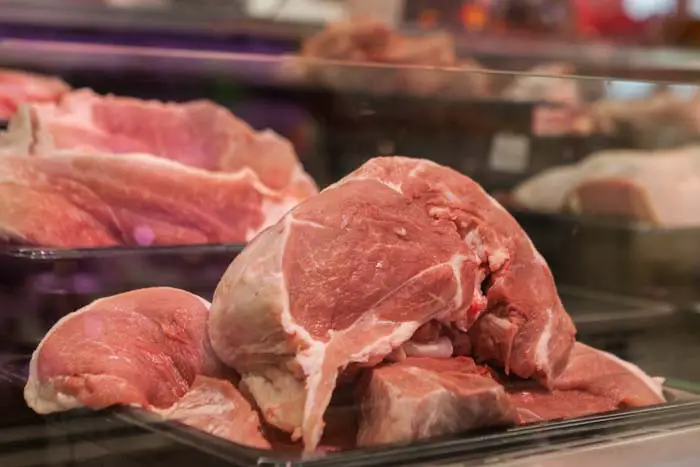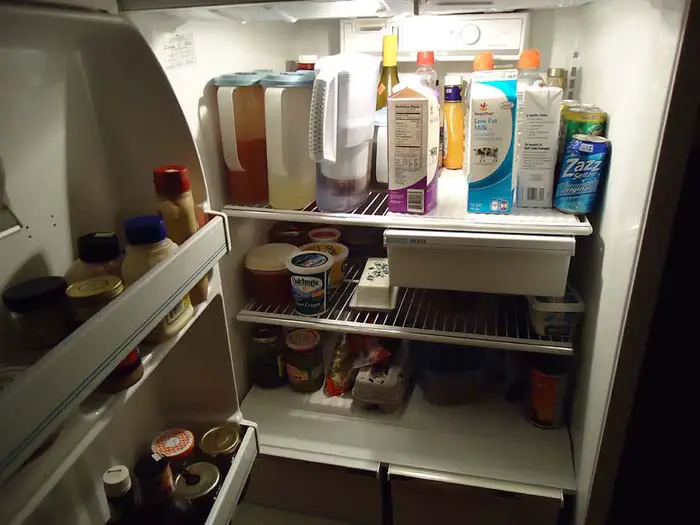Because of its importance as a protein source, knowing how to store meat properly is a skill worth developing. Keeping beef in a freezer or fridge has become second nature to us. When asked what they do with their meat when the power goes off, many say they eat as much as possible within a few days. After that, dispose of what’s left over to prevent food poisoning.
So, you stocked up on all this meat when it was on sale at the butcher shop. The next step is to put it away safely. You could be going camping or loading up the freezer at home.
Considerations when buying raw meat
There are a few details to keep in mind the next time you’re in the supermarket or farmer’s market shopping for meat. One way to ensure the meat is safe is to look at its color.
Red meat needs to be a deep color. Colors like brown, purple, and red-brown are fine. Pork should be pink in color, whereas game meats should be a deep brown.
In terms of the color of newly slaughtered fowl, that attribute depends on the animal’s diet. So, anything from yellow to blueish-white is probably fine.
In terms of aroma, meat shouldn’t have a strong smell. Avoid it if you smell anything sour or rotting. Examining the meat’s fibers’ direction of growth can reveal whether or not it is tender. Observe the red meat, and you’ll notice the fibers within it.
The meat has a strong flavor and is particularly tough if the grains are easily visible and coarse. Looking closely at beef tenderloin, you won’t find many or any noticeable grains. This indicates that the meat will be very delicate once you cook it.
The ideal texture for beef is very firm, dense, and dry. The poultry you consume has to be dry and firm. Keep away from any slimy or sticky meat. When the quality of the meat is low, it tends to look as though it will quickly become inedible.
Look at the best-before date, too. The expiration date is more of a quality indicator than a safety measure. The meat’s quality will decline after the best-before date, but it will still be safe to eat for a few more days.
If you aren’t going to cook it immediately, get meat that has a later sell-by date. Simply put, you can safely store meat in the freezer for a couple of extra days before it spoils.
Eat meat on or before its best-by date for optimal safety. Also, check your meat’s expiration date to ensure it’s still good to eat. Meat that has passed its best-before date poses serious health risks, so don’t eat it past its expiration.
What Spoils Raw Meat?
Raw meat can quickly go bad due to harmful organisms, including bacteria and mold. Also, be mindful of the meat’s storage temperature. At 40°F, the meat starts to spoil.
Raw meat will rot more rapidly if you keep it at temperatures above 40°F for an extended period of time.
Meat spoilage can also be due to physical damage. This is why you should look for any obvious flaws or signs that the meat was handled and stored incorrectly.
Should you wrap meat to preserve it? What do you use?

Vacuum Sealing
This is the best option to store meat in the freezer for a few months. After vacuuming all the air and heat-sealing the open end of the bag, you have created an airtight seal. The seal will keep the contents fresh for much longer.
Those who enjoy barbecuing but cannot pass up a bargain on meat can benefit greatly from investing in a vacuum sealing system. Also, because the plastic comes in rolls, each cut can fit like a glove. You can now put an entire rack of ribs in a bag without dividing it into halves or thirds.
Extra-large pieces of meat, such as brisket, are typically unsuitable for indoor cooking. However, it works wonderfully for smaller cuts of meat such as chicken, chops, and steaks.
Freezer Paper
Freezer paper is thinner and has a thin plastic coating on one side. This makes it ideal for preventing leakage and containing any juices that may escape when cooking. It mimics the look of butcher paper while retaining the texture of wax paper.
To ensure maximum defense against the chill, wrap your meat tightly with the plastic-coated side that faces in and secure it with tape. The main drawback to using this paper is that it is not widely available.
Reusable Containers
It’s tempting to think these are the best solutions for short-and long-term cold storage. But these reusable containers have a few drawbacks.
Use them when you need an easy way to use leftover meat from the refrigerator. They don’t let any air in or out and stack well. But you should place these containers in a freezer.
This lets air in and sometimes leaves little plastic particles in the meat. It’s important to prevent air from getting in, yet most cheap plastic containers do not shut well enough. In addition, they may become fragile and break with age.
Freezer Bags
You can get freezer bags easily in the market. The resealable plastic bag has revolutionized how we store food, perhaps even more so than the refrigerator. Freezer bags are durable, cheap, and airtight. You can use them again and again after a good wash.
Wrap the meat with butcher paper and place it in a freezer bag for maximum protection. These bags have a stronger locking mechanism. They also feature thicker plastic than standard sandwich bags.
Plastic Wrap
A plastic food wrap is a great option for keeping meat, and you will likely already have a roll in your kitchen. To ensure maximum safety, wrap it up tight.
Plastic wrap is only suitable for short-term use because of its thinness. If you plan on storing the beef in the freezer for a long period of time, you should choose a sturdier cut.
Butcher Paper
This is the odd, heavy, brown, or pink paper the butcher uses to wrap your meat. It’s ideal for temporary storage if you use tape to wrap it up securely. Well-wrapped meat doesn’t need anything extra to keep it cold.
Butcher paper is ideal for this purpose. There are better choices for long-term storage. However, it does prevent freezer burn.
It’s important to purchase butcher paper that meets food safety standards. This is because there are many imitations on the market.
Can Raw Meat Stay Uncovered in the Refrigerator?
Never let your meat out of the refrigerator uncovered. It still needs to be covered, even when brought to room temperature. If you want to keep the contents fresh, you should definitely cover them.
Do not forget that bacteria thrive in uncooked meat. One of the best ways to keep it safe is to adhere strictly to all precautionary guidelines.
Cover it before storing it in your fridge to prevent bacteria from developing and spreading. It is bad to leave it exposed in the refrigerator, just like most other foods.
Important Takeaways:
- When keeping fish, it’s important to use caution. When compared to other meats, they go bad more quickly. Pack them in as little space as possible by wrapping them firmly. When seafood is frozen, it maintains its quality and freshness for a long period.
- When the right conditions exist, meat can become a breeding ground for viruses, fungi, and even bacteria. The most common disease-causing organism in meat is bacteria.
- Keep the meat fresh by using a container with cellophane or a lid. Wrap the meat in cellophane before placing it in containers to prevent juices from leaking out.
- The best way to preserve meat in your refrigerator is to correctly arrange the items within it.
- Diseases like salmonellosis, gastrointestinal illness, trichinosis, shigellosis, and food poisoning can be spread through tainted meat that has been incorrectly stored.
- Tightly wrapping meat and storing it in the fridge are the two most important factors in meat storage.
- When putting the meat in your refrigerator, ensure you store uncooked seafood and meat below the cooked food at the bottom of the fridge. Store injected, tenderized, or ground meat below whole cuts.
- Unsafe storage and packaging of meat can also lead to cross-contamination. All possible pathways for this transformation are equipment to the food, meat to food, or human to food.
- Keep poultry in a designated area on the bottom shelf of your refrigerator.
- You can maintain the meat’s safety and quality through careful storage.
Conclusion
Meat should be thawed in the refrigerator, not on the kitchen counter. Slower preparation will prevent harmful microorganisms from attaching to the meat before you cook it. In addition, marinate meat when cold instead of at room temperature.
You spend a lot of money on meat for your family’s dinners, so it’s only fair to take precautions to keep it fresh and free of bacteria. Follow these storage tips to ensure the safety and longevity of your meat supplies.

